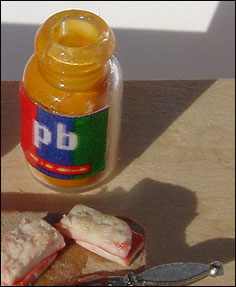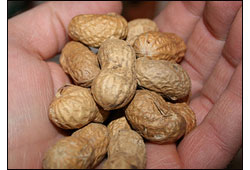
|
|
In one instance, the army attacks a convoy carrying bread and wheat, which is in dangerously short supply. The firefight severely damages the town, and the convoy can’t deliver the food. The allied commander decides it's too dangerous to send food to the town and cuts off all shipments. Now the town is suffering, deprived of vital nutrients and resentful of the local army. Food allergies can work the same way. According to a Canadian Medical Association study, more t han 150,000 Canadians suffer from the life-threatening allergy known as anaphylaxis. In this condition, the body’s immune system overreacts to otherwise common substances found in peanuts, tree nuts, milk products, shellfish and bee venom. Typically our immune system protects us from viruses and bacteria that would hurt us but in cases where anaphylaxis has been diagnosed, the immune system perceives even garden-variety substances as a threat. Fighting the invader The body’s immune system will immediately react to an allergen outwardly with swelling of the face, lips and tongue, hives, vomiting, and diarrhea.
Internally, the body is rapidly going into shock as the airway swells. Without proper treatment, a person can quickly lapse into a coma and die. Here’s what happens. “The airways clamp down and they fill with mucous,” explains Dr. Peter Vardas, a physician at St. Michael’s Hospital in Toronto. “It becomes very difficult to breathe and they will also experience a drop in blood pressure to the point where there may not be enough oxygen being delivered to the tissues. They may have problems with heart rhythm and the blood vessels in the heart might constrict and lead to inadequate oxygen delivery to the heart.” Anaphylaxis has become a particular problem for the education system, as schools struggle to cope with students for whom even a trace of an offending substance can lead to a life-threatening situation. Many schools have banned peanuts and nut-based products outright, arguing that the welfare of the allergic students must be protected. Some parents of non-allergic students have subsequently complained about these policies, arguing that it is now very difficult to know what foods are affordable and safe for their children’s lunch bag. Even so, when students with severe food allergies move from high school to an open world, they are again at risk. Three areas of scientific research are ongoing to find a solution: Breeding peanuts that are missing the allergy-causing proteins, experimenting with drugs that may lessen allergic reactions, and looking for alternatives to peanut and other nut butters. The army's new weapons It is the first of these avenues that primarily intrigues scientists. Isolate the protein responsible for the allergic reaction and disarm it. Tests have shown that most people with food allergies have an antibody known as immunoglobulin E in their bloodstream. This immunoglobulin seems to fixate on certain types of proteins, rather like a sniper trained to look for specific enemies. The problem is that the immunoglobulin appears to get “confused” and sense a threat when in fact none exists. Once it has become sensitized to a certain protein, it is much more likely to react when it comes into contact with the same protein again and trigger the allergic reaction that can be so devastating.
The U.S. Department of Agriculture is exploring the possibility of breeding a hypoallergenic peanut. Scientists have screened approximately 300 varieties of peanuts to look for one that does not contain the specific type of protein most often implicated in allergic reactions. So far, they have identified the NC 4 peanut as one that lacks the protein vicilin Ara h 2 . “Removing the allergens Ara h 1 and h 2 would reduce the numbers of people affected by peanut allergies by up to 50 per cent,” says Soheila Maleki, the lead chemist in the development of the NC 4 peanut. Of course, this is not a blanket solution. There are approximately 14,000 different types of peanuts, and finding one without the two offending allergens is “like finding a needle in a haystack,” Dr. Maleki says. Therefore, other researchers are attempting to use genetic engineering techniques to switch off the allergens that peanuts contain. Unfortunately for concerned students and their parents, the need to send only these “safe” peanuts to school would still exist. Research into genetically-modified peanuts and other forms of allergy prevention is in its infancy, there is much yet to be learned. Will nut butters made from genetically-modified peanuts cost more than conventional peanut butters? Will there be a substantial difference in taste? Will consumers balk at the idea of a genetically-modified peanut as they traditionally have for other GM foods? All of these questions remain to be answered. Nevertheless, progress is being made. And for many sufferers of peanut and other life-threatening allergies, this can only mean good news.
|
|
|

